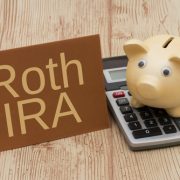Self-Directed 401(K) Loans
Generally, a participant is not permitted to make a withdrawal from an account under an employer-sponsored retirement plan, until that employee experiences a triggering event[1]. A loan is an exception to this requirement, allowing employees to take loans from their account balances under an employer sponsored retirement plan regardless of whether they experience any triggering events.
Loans are available to an employee, only if the employer’s plan includes a feature allowing loans.
Loans may not be made from Self-Directed IRAs. Loans may be made from accounts under employer sponsored retirement plans[2].
A loan is nontaxable, providing it meets statutory requirements, which include limitations on the amount and repayment periods.
This document provides an overview of the rules that apply to these loans.
Self-Directed 401(K) Loan General Loan Requirements
The following are the general requirements that a loan and loan program must meet:
- Must be made available to all participants and beneficiaries under the plan on a reasonably equivalent basis;
- Must not be made available to highly compensated employees, officers or shareholders in an amount greater than the amount made available to other employees;
- Must be made in accordance with specific provisions regarding loans as provided under the plan;
- Must bear a reasonable rate of interest; and
- Must be adequately secured.
Self-Directed 401(K) Maximum Loan Amount
The maximum amount that a participant may borrow is the lesser of:
- 50% of his/her vested account balance, or
- $50,000
A plan may allow a participant to borrow up to 50%, even if it is more than 50% of that participant’s vested account balance. However, the dollar amount can never exceed $50,000[3].
A plan may allow participants to have multiple loans (per participant) from the plan at the same time. In these cases, the plan administrator must perform a more complex calculation to ensure that the outstanding loan balance does not exceed statutory limit.
Self-Directed 401(K) Repayment Period
Loans must be repaid in substantially equal amounts that include principal and interest, and repayments must be made at least quarterly.
The payment period should not exceed 5-years, unless the loan was taken for the purpose of purchasing the employee’s principal residence.
For loans taken by employees performing military service, repayments may be suspended.
Self-Directed 401(K) Deemed Distributions and Offsets
While loans are generally not treated as distributions, exceptions apply. Under these exceptions, a loan can be treated as a deemed distribution or an offset. And, whether the amount is eligible to be rolled over depends on whether it’s a deemed distribution or an offset.
Deemed Distribution
A loan that fails to meet the statutory requirements would be ‘in default’. Examples include loans that exceed the statutory limit and the permitted repayment terms.
A loan that is in default is generally treated as ordinary income to the participant, with any pre-tax amount being taxable.
A deemed distribution is not a true distribution, and therefore cannot be rolled over.
The Plan Document should be consulted to determine when a loan becomes a deemed distribution, and how deemed distributions should be handled.
Offset
An offset typically occurs when a participant’s employment is terminated with the employer, and the participant has an outstanding loan balance. If the loan is not repaid, the participant’s account balance can be offset (reduced) for the outstanding loan amount.
An offset is a true distribution, because it occurs as a result of the participant experiencing a triggering event. As such, it can be rolled over (as long as the amount is rollover eligible).
If a plan loan is offset against a participant’s balance, the amount can be rolled over within 60-days. However, if the offset occurs as a result of the participant’s termination of employment or the termination of the plan, the usual 60-day period for completing rollovers is extended to the participant’s tax filing due date, including extensions, for the year in which the offset occurs[4].
Self-Directed Solo 401(K) Plan Administrator Services Required
The administration of loans is a complicated process, and the services of a plan administrator should be engaged to ensure compliance with regulatory requirements as well as to ensure that loans are handled in accordance with the terms of the governing plan document.
Interested in learning more about Self-Directed IRAs? Contact American IRA, LLC at 866-7500-IRA (472) for a free consultation. Download our free guides or visit us online at www.AmericanIRA.com.
[1] Meeting a requirement to make a withdrawal, such as reaching retirement age or no longer working for the employer
[2] Qualified plan, such as a 401(k) or pension plan, 403(b) and governmental 457(b)
[3] Exceptions can apply. For example, the dollar limit was increased to $100,000 and the percentage limit increased to 100% for plan participants affected by Hurricanes Harvey, Irma, or Maria- from August 23, 2017 (affected by Harvey), September 4, 2017 (affected by Irma), or September 16, 2017 (affected by Maria), through December 31, 2018.
[4] Tax Cuts and Jobs Act (Pub. L. No. 115-97)



